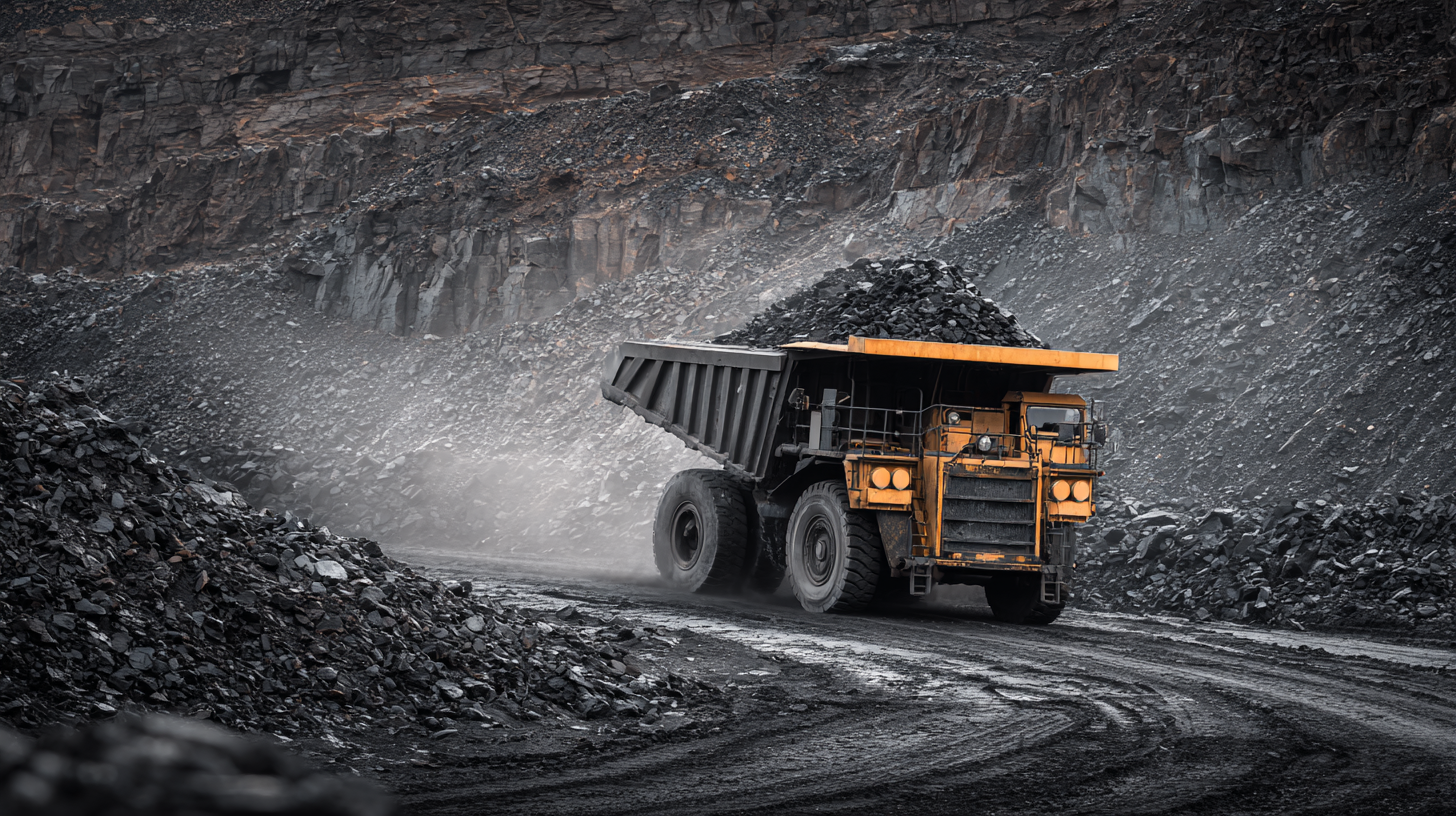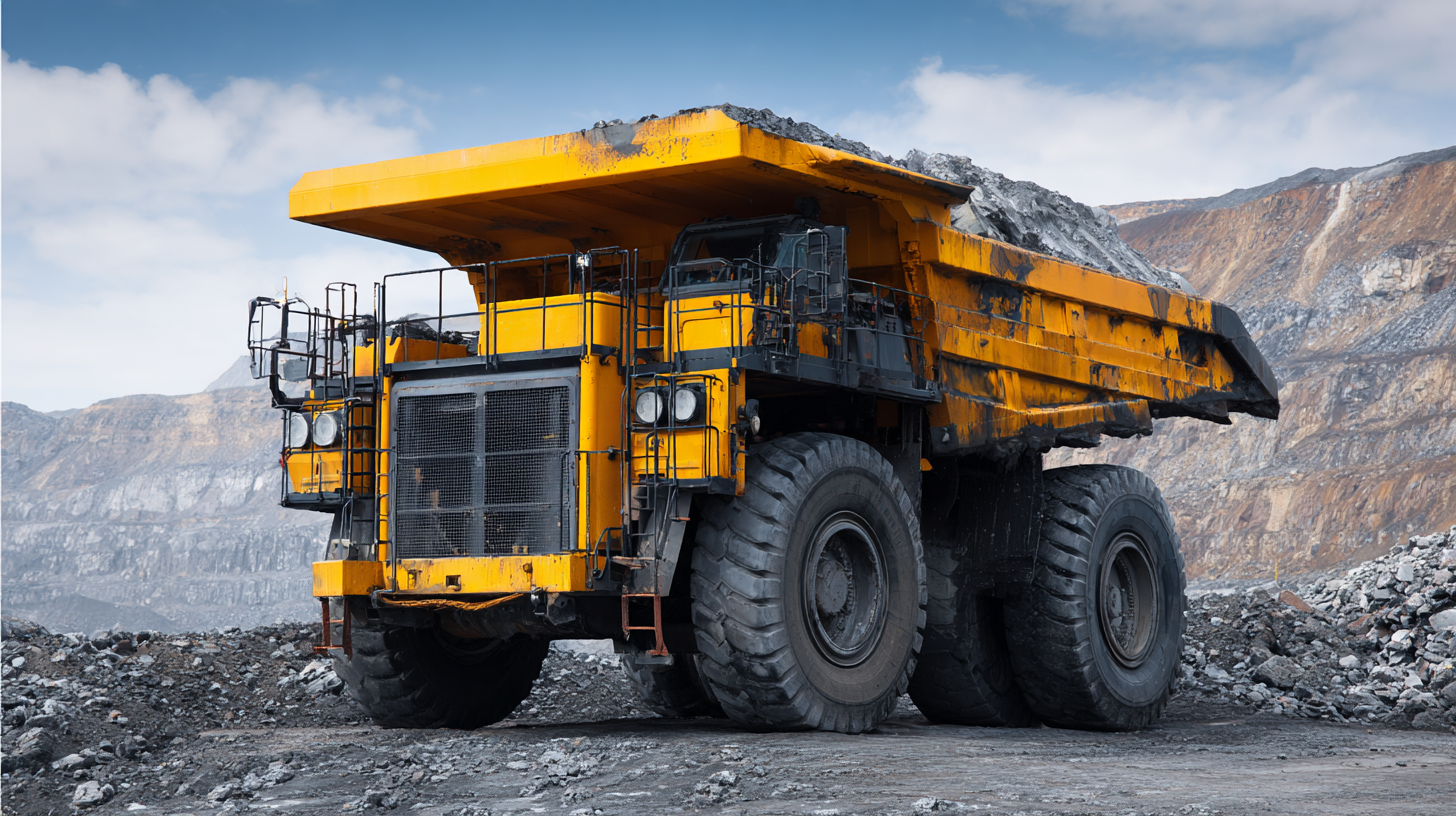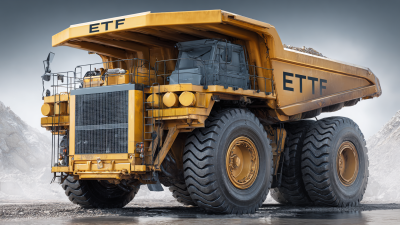The evolution of coal haul trucks has significantly transformed modern mining techniques, driving efficiency and safety in an industry that continues to adapt to changing demands. According to the World Coal Association, coal mining remains a vital sector, producing over 7 billion tonnes annually, with haulage representing one of the largest operational costs. In a report by MarketsandMarkets, the coal haul truck market is projected to reach USD 5.2 billion by 2025, emphasizing the importance of technological advancements in fleet management and automation.

Recent innovations in coal haul trucks, including enhanced load capacities and automation systems, have not only optimized transport efficiency but also reduced environmental impact. As the industry moves towards more sustainable practices, the role of these specialized vehicles becomes crucial in minimizing carbon footprints while maximizing productivity. This paper will explore the progression of coal haul trucks and their consequential effects on contemporary mining operations.
The historical development of coal haul trucks has significantly transformed the mining industry over the past century. Initially, coal transportation was labor-intensive, relying on manual methods or horse-drawn carts. However, the advent of powered haul trucks marked a pivotal shift. By leveraging mechanical innovations, these trucks have increased the efficiency and safety of coal haulage. Today, we witness the rise of autonomous mining trucks, with the market projected to escalate from $1.35 billion in 2025 to $6.47 billion by 2032. This surge indicates a growing reliance on automation in mining operations, streamlining the extraction and transportation of coal.

As mining technology continues to evolve, the emphasis on eco-friendly solutions is evident. For instance, electric and hybrid trucks are expected to achieve a remarkable CAGR of 27.2%, reflecting the industry's commitment to sustainability. India's recent milestone of surpassing one billion tonnes of coal production underscores the urgent need for modernized equipment that aligns with both productivity and environmental considerations. With advancements in coal haul trucks, mining not only becomes more efficient but also adapts to the challenges posed by an increasingly environmentally conscious world.
The evolution of coal haul trucks has significantly influenced mining operations, with technological innovations driving a shift from conventional to advanced models. Early coal haul trucks were designed primarily for efficiency, often lacking in features that maximized safety and operational capability. These trucks faced limitations in payload capacity and speed, impacting overall productivity in coal mining. The introduction of larger, more powerful trucks laid the groundwork for improvements, enhancing the ability to transport greater quantities of coal across varied terrains.
In recent years, advanced coal haul trucks have incorporated cutting-edge technologies such as GPS navigation, automation, and enhanced safety systems. These innovations have not only increased efficiency but also reduced operational costs and environmental impact. The use of autonomous trucks, for instance, enables continuous operations without the need for human intervention, leading to increased consistency in haulage and reduced downtime. Moreover, the integration of real-time data analytics allows for better decision-making related to route optimization and maintenance needs, pushing the envelope on productivity in modern mining techniques.

With the rising demand for environmentally responsible practices, modern coal haul trucks are at the forefront of transforming the mining industry towards more sustainable operations. Recent innovations in mining truck technologies exhibit enhanced efficiency and reduced emissions, as a significant portion of mining fleets is projected to be electric and autonomous by 2025. This shift not only supports operational efficiency but significantly minimizes the environmental impact associated with coal extraction. According to industry reports, over 60% of open-pit mines are expected to utilize autonomous haul trucks by 2025, leading to improved safety, reduced fuel consumption, and lower greenhouse gas emissions.
In tandem with advancements in coal haul truck technology, mines like Bingham Canyon are employing smart practices that leverage modern technologies to ensure sustainable mining. The integration of digital twin solutions and automation in mining processes helps optimize resources and reduce waste. In 2025, innovative coal machinery is set to enhance operational safety and efficiency while promoting environmentally friendly practices. By adopting these innovative technologies, the coal mining industry can achieve a balance between meeting global energy demands and protecting the planet, demonstrating a significant commitment to sustainability.
This chart illustrates the evolution of coal haul trucks over the years, emphasizing their increasing load capacity and improving fuel efficiency. As technology advances, these innovations contribute to more sustainable mining practices.
The role of coal haul trucks in modern mining operations cannot be overstated. These vehicles have evolved significantly over the years, becoming more efficient and robust, which has directly influenced mining techniques. Today’s coal haul trucks are designed with advanced technologies that increase load capacity while reducing fuel consumption and emissions. This evolution has led to a remarkable improvement in operational efficiency, allowing mining companies to transport larger quantities of coal with fewer trips, thereby optimizing overall logistics.
In addition to enhanced efficiency, modern coal haul trucks are equipped with real-time data tracking systems that provide valuable insights into performance and equipment health. This data-driven approach enables operators to schedule maintenance proactively, reducing downtime and increasing productivity. Furthermore, the integration of automation features contributes to improved safety in mining operations, as it minimizes the risk associated with manual handling and enhances precision in load management. As a result, coal haul trucks continue to play a pivotal role in shaping the future of mining, fostering both economic viability and environmental responsibility within the industry.
| Dimension | Value |
|---|---|
| Average Load Capacity (tons) | 200 |
| Fuel Efficiency (g/kWh) | 190 |
| Operational Cost (per hour, $) | 150 |
| Average Speed (km/h) | 40 |
| Maintenance Downtime (hours/month) | 5 |
| Payload Type | Coal |
| Advancements in Technology | Automatic Transmission, GPS Tracking |
| Average Lifecycle (years) | 15 |
| Emission Standards Compliance | Tier 4 Final |
The future of coal haul trucks is on the brink of transformation, driven by emerging technologies that promise to enhance efficiency and sustainability in modern mining operations. One prominent trend is the integration of autonomous hauling systems, which have been shown to increase productivity by up to 30%, according to a report by the World Mining Congress. These autonomous trucks reduce human error, optimize routes, and operate around the clock, thereby drastically improving operational efficiency.
Additionally, electric and hybrid haul trucks are gaining traction as the industry prioritizes reducing carbon emissions. A recent analysis by the International Council on Mining and Metals (ICMM) reveals that transitioning to electric haulage could reduce greenhouse gas emissions by as much as 50% in underground mining operations. Innovations such as battery swapping and solar charging stations are being explored to support this shift, making coal mining more sustainable while lowering operational costs. As these technologies continue to evolve, the coal mining sector stands to benefit from enhanced performance, reduced environmental impact, and improved safety standards.





